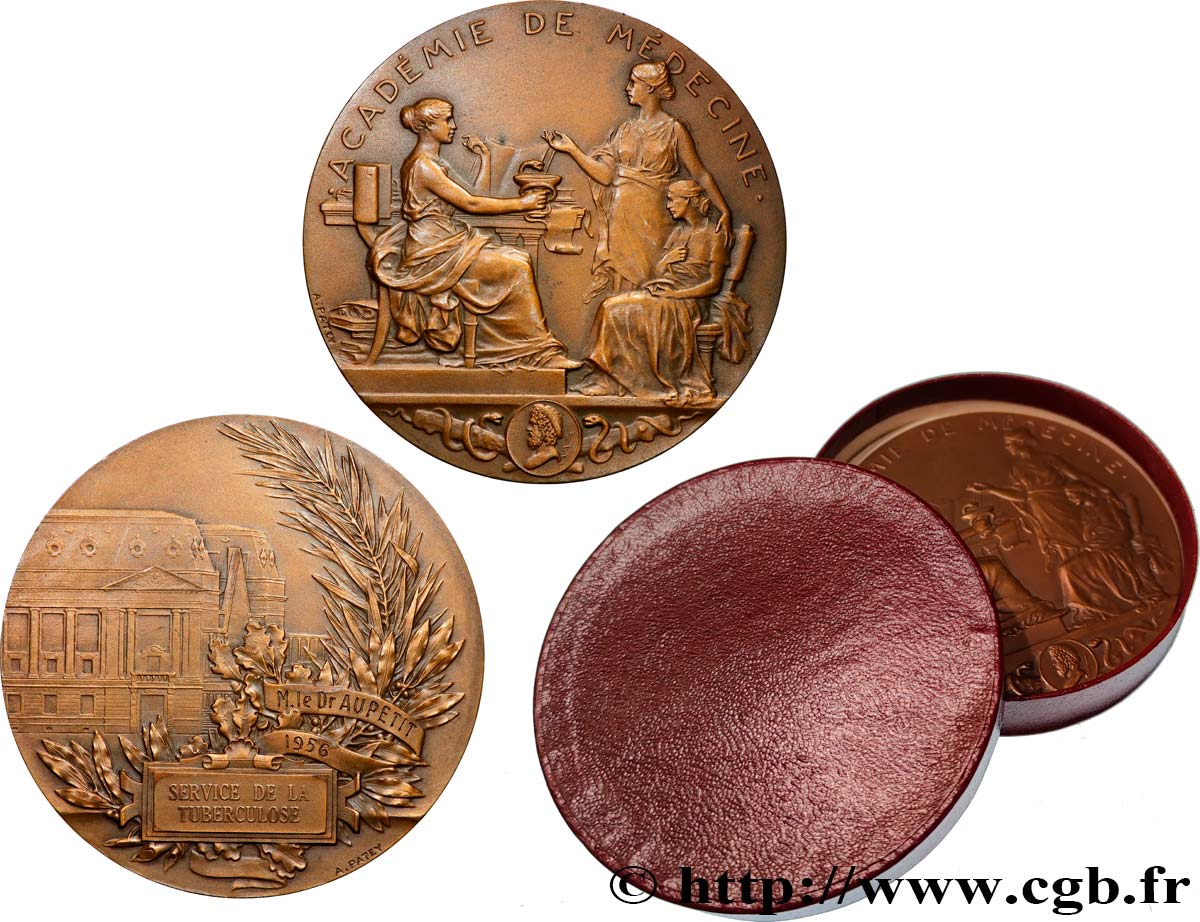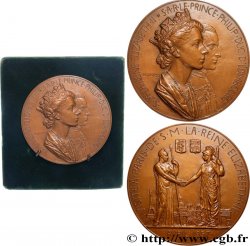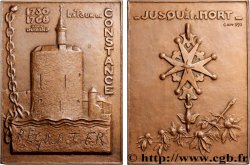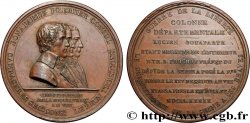Live auction - fme_906363 - IV REPUBLIC Médaille, Académie de médecine, Service de la Tuberculose
Чтобы принять участие в торгах, вы должны войти в систему и стать подтвержденным участником аукциона. Войдите, чтобы сделать ставку. Ваш аккаунт будет подтвержден в течение 48 часов. Не ждите до закрытия торгов, чтобы зарегистрироваться.Сделав ставку на данный товар, вы вступаете в юридическое соглашение на покупку выбранного товара и нажатием кнопки «Сделать ставку» подтверждаете принятие вами условий интернет-аукционов cgb.fr.
Ставка может бить сделана только в полном эквиваленте евро. Торги закроются согласно времени, указанному в описании товара, все ставки, сделанные после закрытия торгов, учитываться не будут. Не следует откладывать предложение вашей ставки до последнего момента, так как система может не успеть обработать вашу заявку, и ваша ставка не будет принята. Более детальную информацию вы найдёте здесь: FAQ по интернет-аукционам.
Все ставки победителей подлежат комиссии 18%.
Все ставки победителей подлежат комиссии 18%.
| Оценить : | 120 € |
| Цена : | Нет ставки |
| Максимальная предлагаемая цена : | Нет ставки |
| Конец торгов : | 09 April 2024 18:21:03 |
Тип Médaille, Académie de médecine, Service de la Tuberculose
Дата: 1956
Монетный двор / Город: 75 - Paris
Металл: bronze
Диаметр: 59 mm
Ориентация осей монеты: 12 h.
Гравер PATEY Henri-Auguste-Jules (1855-1930)
Вес: 92,15 g.
Век: lisse + Corne BRONZE
Пуансон: corne BRONZE
Комментарии о состоянии
Patine hétérogène. Quelques points d’usure
Лицевая сторона
Аверс: легенда: ACADÉMIE DE MÉDECINE.
Аверс: описание: Trois femmes autour d’une table ; à l’exergue portrait d’Esculape dans un médaillon posé sur un tronc avec deux serpents enroulés. Signé : A. PATEY.
Обратная сторона
Реверс: легенда: SERVICE DE LA / TUBERCULOSE // M. LE DR AUPETIT / 1956.
Реверс: Описание: Vue architecturale de l’Académie avec un cartouche pisé sur une gerbe végétale retenue par un ruban inscrit.
Комментарий
Médaille, conservée dans une boîte cartonnée bordeaux, décernée au docteur Aupetit.
Dans la mythologie grecque, Asclépios (en latin Aesculapius) est dans l'épopée homérique un héros thessalien puis, à l'époque classique, le dieu gréco-romain de la médecine. Fils d'Apollon, il meurt foudroyé par Zeus pour avoir ressuscité les morts, avant d'être placé dans le ciel sous la forme de la constellation du Serpentaire.
Il correspond à l'Esculape romain, dont le nom est une traduction en alphabet latin du dieu grec, et à l'Imhotep égyptien. Son attribut principal est le bâton d'Asclépios, autour duquel s'enroule un serpent, aujourd'hui symbole de la médecine.
Son principal lieu de culte est situé à Épidaure, où il guérit les pèlerins par incubation. Il est invoqué dans le serment d'Hippocrate aux côtés de son père Apollon et de ses filles principales Hygie et Panacée. Il est l'ancêtre mythique des Asclépiades, une dynastie de médecins exerçant à Cos et Cnide, dont Hippocrate est le plus illustre membre..
Medal, preserved in a burgundy cardboard box, awarded to Doctor Aupetit. In Greek mythology, Asclepius (in Latin Aesculapius) is a Thessalian hero in the Homeric epic and then, in the classical period, the Greco-Roman god of medicine. Son of Apollo, he died struck down by Zeus for having resurrected the dead, before being placed in the sky in the form of the constellation Serpentarius. He corresponds to the Roman Aesculapius, whose name is a translation into the Latin alphabet of the Greek god, and to the Egyptian Imhotep. His main attribute is the staff of Asclepius, around which a serpent is coiled, today a symbol of medicine. His main place of worship is located at Epidaurus, where he heals pilgrims by incubation. He is invoked in the Hippocratic Oath alongside his father Apollo and his main daughters Hygieia and Panacea. He is the mythical ancestor of the Asclepiades, a dynasty of physicians practicing in Cos and Cnidus, of which Hippocrates is the most illustrious member.
Dans la mythologie grecque, Asclépios (en latin Aesculapius) est dans l'épopée homérique un héros thessalien puis, à l'époque classique, le dieu gréco-romain de la médecine. Fils d'Apollon, il meurt foudroyé par Zeus pour avoir ressuscité les morts, avant d'être placé dans le ciel sous la forme de la constellation du Serpentaire.
Il correspond à l'Esculape romain, dont le nom est une traduction en alphabet latin du dieu grec, et à l'Imhotep égyptien. Son attribut principal est le bâton d'Asclépios, autour duquel s'enroule un serpent, aujourd'hui symbole de la médecine.
Son principal lieu de culte est situé à Épidaure, où il guérit les pèlerins par incubation. Il est invoqué dans le serment d'Hippocrate aux côtés de son père Apollon et de ses filles principales Hygie et Panacée. Il est l'ancêtre mythique des Asclépiades, une dynastie de médecins exerçant à Cos et Cnide, dont Hippocrate est le plus illustre membre..
Medal, preserved in a burgundy cardboard box, awarded to Doctor Aupetit. In Greek mythology, Asclepius (in Latin Aesculapius) is a Thessalian hero in the Homeric epic and then, in the classical period, the Greco-Roman god of medicine. Son of Apollo, he died struck down by Zeus for having resurrected the dead, before being placed in the sky in the form of the constellation Serpentarius. He corresponds to the Roman Aesculapius, whose name is a translation into the Latin alphabet of the Greek god, and to the Egyptian Imhotep. His main attribute is the staff of Asclepius, around which a serpent is coiled, today a symbol of medicine. His main place of worship is located at Epidaurus, where he heals pilgrims by incubation. He is invoked in the Hippocratic Oath alongside his father Apollo and his main daughters Hygieia and Panacea. He is the mythical ancestor of the Asclepiades, a dynasty of physicians practicing in Cos and Cnidus, of which Hippocrates is the most illustrious member.








 Cообщить об ошибке
Cообщить об ошибке Распечатать страницу
Распечатать страницу Отправить мой выбор
Отправить мой выбор Задать вопрос
Задать вопрос Consign / sell
Consign / sell
 Информация
Информация











